This comparison is, in some respects not entirely valid. I’ll be comparing the regular production edition of the Spyderco Paramilitary 2 (PM2) to a Spyderco “sprint run” (special or limited production) model Manix 2 – the Spyderco Manix 2 CTS-BD30P. The regular production Manix 2 isn’t nearly as comparable or competitive with the regular production PM2 – it’s heavier with a lesser grade blade steel and isn’t full flat ground. Now, some Spyderco sprint runs have higher production runs than others, and it’s my guess that the Manix 2 CTS-BD30P was produced in relatively high numbers – in fact as of this writing, it can still be purchased brand new in box from some vendors (most notably Bento Box). So since it is still available, I don’t feel too badly about using this sprint run model Manix 2 to compare to the PM2.
In most respects, these two knives are far more similar than they are different – stainless steel tactical folders with g10 handle scales. Some parts are even common to both knives including the screws, lanyard hole, “Spydie hole,” and the pocket clip:
Chemically speaking the formulation for the CTS-BD30P steel used in the Manix 2 is nearly identical to that of S30v. On paper, the slight differences in CTS-BD30P would seem to give it a performance edge (pardon the pun…) as compared to S30v, but in practical usage I can’t discern a significant difference between the two – they seem to have very similar edge retention and sharpening properties. In terms of the blades themselves, each has a distinctive shape – the leaf shape of the Manix 2 is a bit more aesthetically pleasing to my eye, but that’s a matter of personal preference.
In terms of basic specifications, several numbers do favor the PM2 – it’s both longer in blade length, and lighter in overall weight. The handles of the Manix 2 are a bit deeper than the slender PM2, and feels a bit beefier in hand – which some (like myself) may prefer. While both knifes exhibit black G10 handles, the PM2 has a finer pattern detail. Both offer excellent traction and grip, but I slightly prefer the G10 on the Manix 2.
In terms of the locking mechanisms on each knife, both are excellent. In terms of basic functionality they both do what they’re supposed to – both the Compression Lock on the PM2 and the Ball Bearing Lock on the Manix 2 provide solid, stable lockup for their respective knife blades, with no hint of blade play on either. In my opinion, the Manix 2 Ball Bearing Lock is a bit more sophisticated in design, and provides some blade deployment options for the Manix 2 that the Compression Lock does not provide. By comparison, the Compression Lock is a bit more “plain Jane” but again, does an excellent job.
In comparing these two knives, it’s hard not to give the PM2 the nod over the Manix 2, based on the on paper advantages which this PM2 has. Personally though, I find the Manix 2 is more aesthetically pleasing, with a few cosmetic details not found on the PM2. The ergonomics of the Manix 2 handle seem to fit my hand better as well – I seem to like the beefier handle of the Manix 2 versus the more slender PM2 handle. I also find the leaf shape of the Manix 2 blade more attractive than that of the PM2. But the real advantage of the PM2 over the Manix 2 variant used in this comparison is that it’s a regular production model. While you can still find the Manix 2 CTS-BD30P sprint run models, it’s not easy. The Manix 2 CTS-BD30P will also likely cost you more – the PM2 will be here for quite some time in its present form at around $110.00. I couldn’t find the Manix 2 CTS-BD30P currently available for less than $174.00 – though I paid about $110.00 each for both of the Manix 2 CTS-BD30P examples I own.
Manix 2 Variants on Amazon.com
Given how similar these two knives are, you almost have to base a decision between the two on aesthetic considerations. From that perspective, the Manix 2 CTS-BD30P is my personal preference, but as the old saying goes “your mileage may vary.”

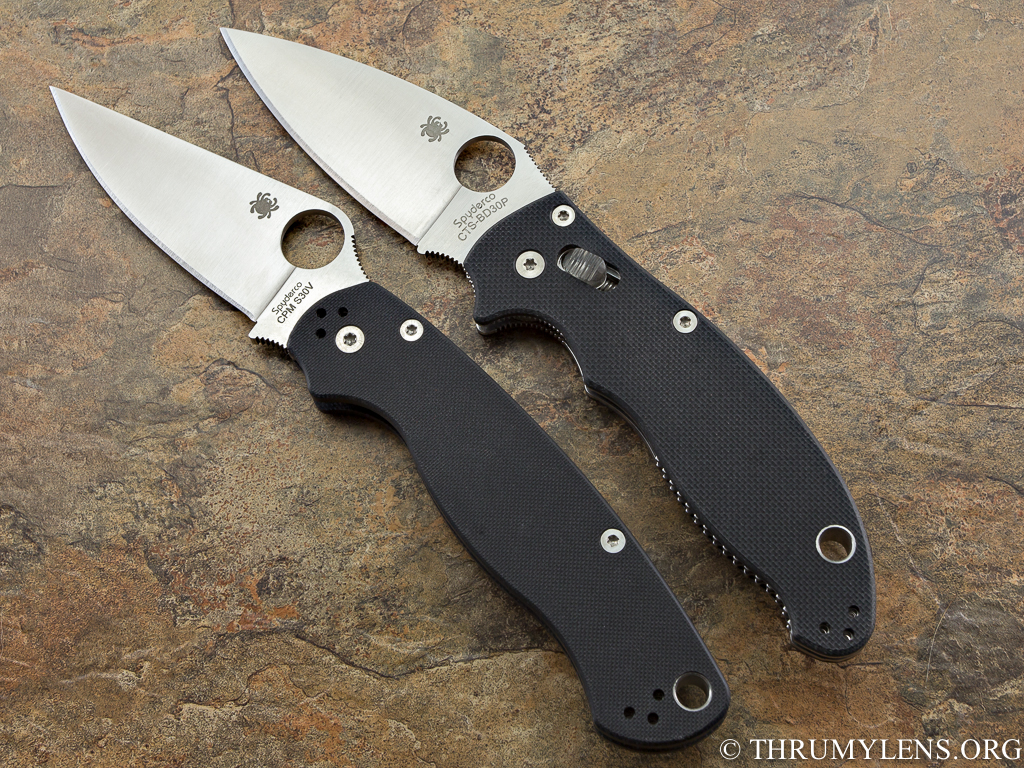
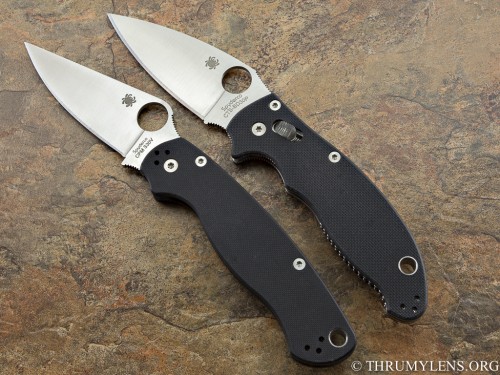

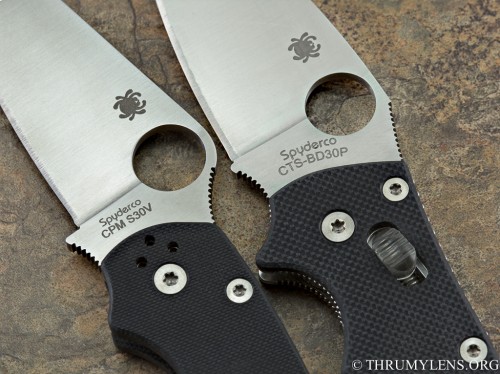
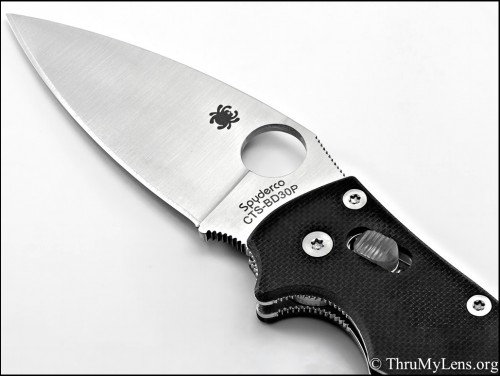
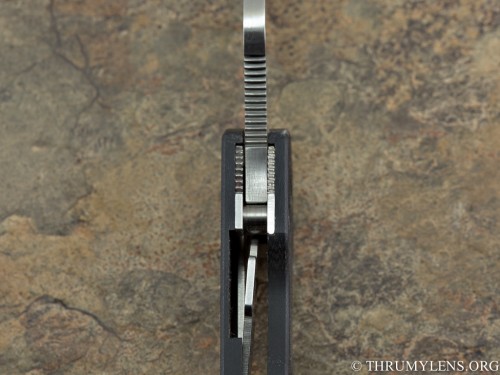
John,
Thanks for a great side by side comparison of the PM2 and the Manix. I have used a Tenacious for awhile and thought I might explore the next level Spyderco has. I settled on either the PM2 or Manix, and youy review came up and it covered all my questions (and is well written to boot). To tell the truth, I will probably just by both!
Best regards,
Tom B.
Thanks for the kind words Tom. Often the question isn’t “which one?” but rather “which one first?” 🙂
Can you tell me if the standoffs on these two knives are the same? Great comparison, by the way.
I think so…but I sold the PM2 long ago.
Thanks for a great comparison! I currently own the PM2 and while the ergonomics feel great for lighter tasks, I find some hot spots created by the lack of contouring for harder cutting tasks (my job involves lots of camping, hunting and etc). How would the Manix fare for harder tasks?
The Manix will reasonably well in most situations, but keep in mind the blade stock is a bit thin relative to other manufactures (ZT, Benchmade, etc.). I don’t think I’d baton with a Manix for example.
I respectfully could not disagree more. These are very different knives in almost every respect. From the type of steel, to the opposing handle shapes, the amount of jimping is almost excessive on the Manix, the lock mechanisms are vastly different, as is the blade geometry. The only area that they share is the color scheme of the materials.
These are very different knives, with a completely different hand feel, and a different purpose between them. There are almost no parallels. I mean this with all due respect, but perhaps you may want to consider revisiting this review.
Mike – I respect your opinion here, but likewise disagree with your assessment. A couple of factual errors you made: the scales are not just identical in color of the material, they’re identical color AND material – both use black G10. The blade steels are different, but as I indicate in the review, are chemically nearly indestinguishable from one another. I also don’t see them as having a different purpose. They’re both billed as being EDC knives with a tactical bent to them. It’s completely valid to compare and contrast these two excellent knives.